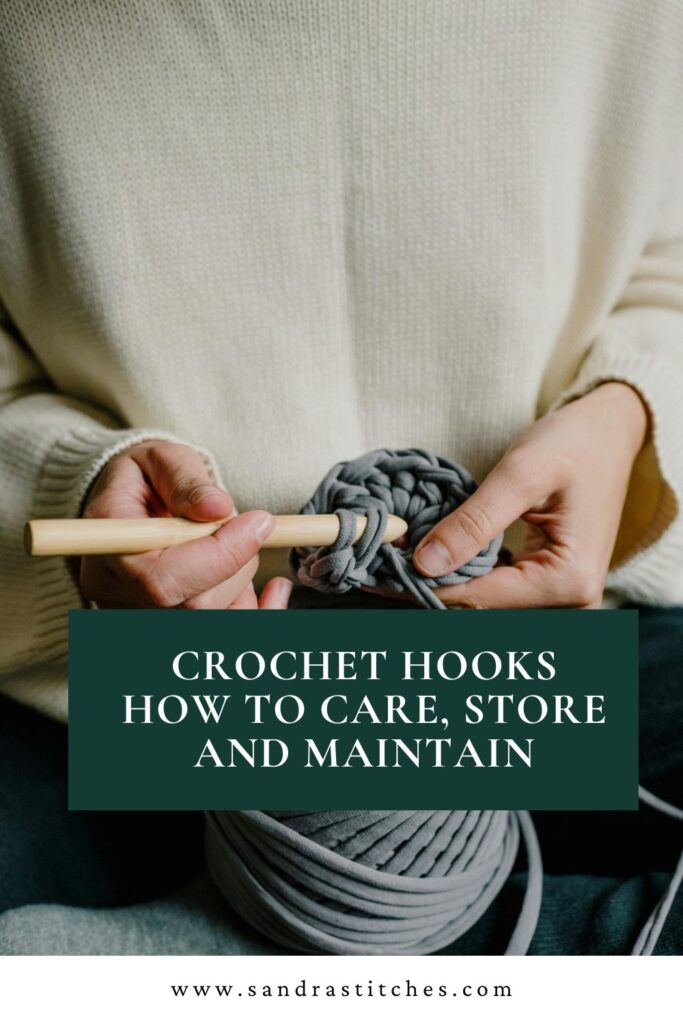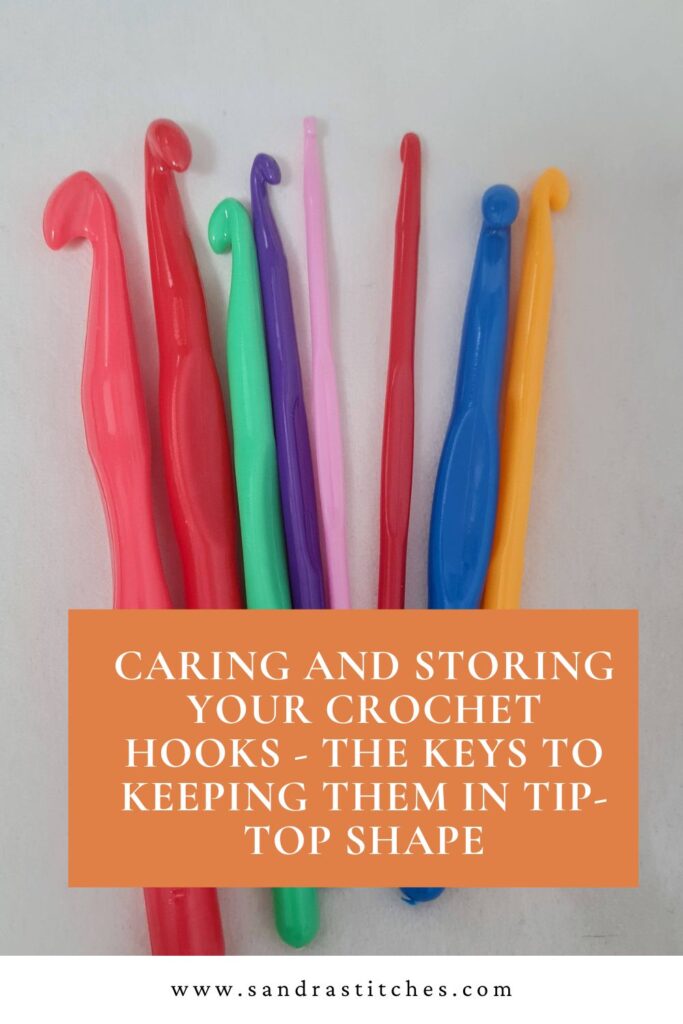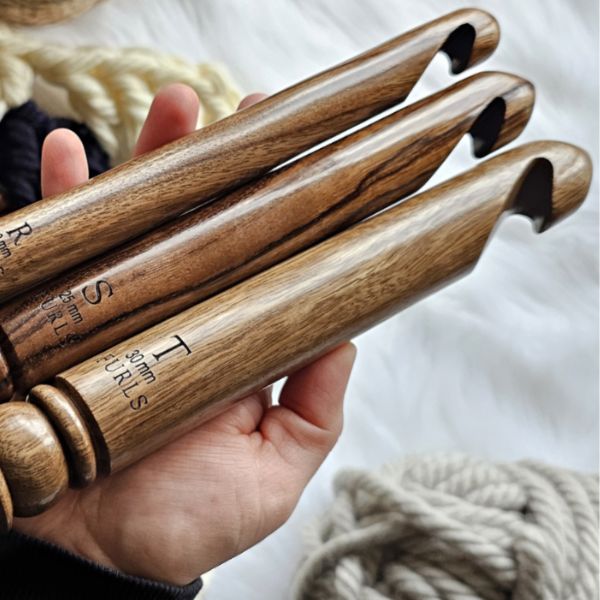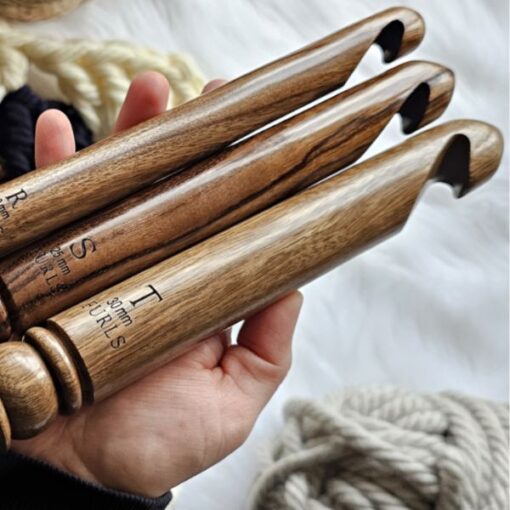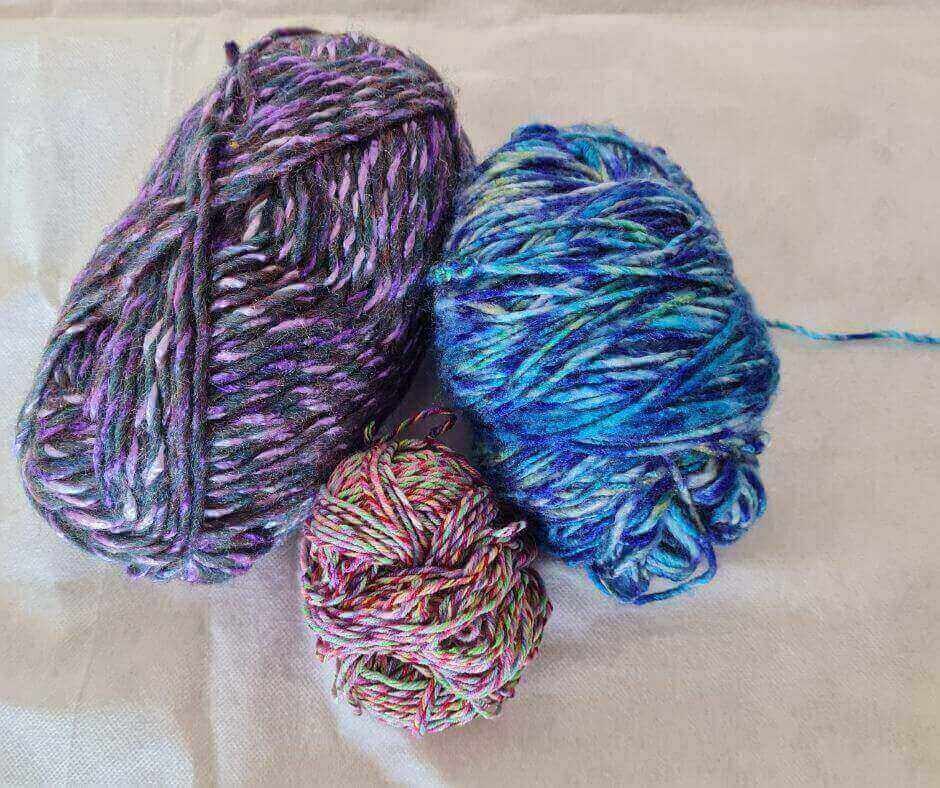Hey, my crochet friend! who here takes care of the crochet hooks?😇 do not be shy, you are not alone!
Taking good care of your crochet hooks is so important. These little tools are the workhorses that turn our gorgeous yarn into amazing crocheted creations. But they can’t do their jobs properly if they get gunked up, damaged, or stored improperly.
Think about it – you put time, money, and creativity into each crochet project. Your hooks put in just as much hard work to get those stitches made! They deserve a little TLC, don’t you think?
Having your hooks in tip-top condition will make your crocheting better, easier, and more enjoyable in the long run.
In this post, we’re going over all the ins and outs of crochet hook care and maintenance.
Get ready to learn the best ways to clean them, store them safely, and prolong their lifespan as long as possible.
Let’s keep those hooks happy and in perfect working order for many, many projects to come!
The Importance of Clean Hooks
Using gunky, debris-filled crochet hooks is just plain unpleasant. Yarn fuzz, dried oil and sweat, lint, you name it – it can all build up over time and make your hooks sticky, slippery, or rough. Blech!
Not only is it uncomfortable, it also puts more strain on your hands and wrists when crocheting.
But beyond just the “ick” factor, dirty hooks can actually cause issues with your crochet work itself.
The buildup can make it harder for yarn to smoothly feed through the hook, leading to snagging, splitting, or uneven stitches.
Sticky hooks will grip the yarn too much, while slippery ones won’t hold tension properly.
In short: keeping your hooks clean is an easy way to ensure better stitch definition and a smoother crocheting experience. Let’s talk about how to get ’em spick and span!
Hook Cleaning Methods
There are lots of different effective ways to clean your crochet hooks and remove any built-up gunk.
The exact method you use can depend on the hook material and the extent of the dirtiness.
But no matter what, never use anything too abrasive that could scratch or dull the hooks.
Dish Soap and Water
For regular, basic cleaning, sometimes all you need is a quick soapy water wash!
Mix up a sudsy solution of warm water and a mild dish soap. Let your hooks soak briefly, then use a soft cloth or brush to gently scrub away any fuzzies, grime, or residue. Rinse thoroughly and allow to fully air dry before using again.
For Wood/Bamboo Hooks: Be cautious about soaking wooden hooks for too long, as the water can cause swelling or cracks over time. Just give them a quick soapy scrub and rinse.
Baking Soda Scrub
Need a little extra oomph for heavy-duty cleaning? Make a simple baking soda paste by mixing it with a few drops of water until it forms a gritty scrub texture. Use an old toothbrush or other soft bristle brush to gently scrub the baking soda paste over your hooks, giving them a light abrasive cleaning. The baking soda helps cut through caked-on grime. Rinse fully afterwards.
Rubbing Alcohol or Vinegar
For really stubborn, stuck-on gunk that just won’t budge, you may need to break out the heavy-hitting cleaners. Plain white vinegar or isopropyl rubbing alcohol are both excellent for dissolving residue and sanitizing your hooks.
Let your hooks soak briefly in an undiluted vinegar or alcohol bath, then use a soft brush and elbow grease to remove any debris. Ensure you rinse thoroughly – any remaining vinegar could cause yarn discoloration, while alcohol residue could make hooks slippery. You may need to do a baking soda rinse afterward to neutralize any vinegar.
Ultrasonic Cleaner
If you really want to go above and beyond, an ultrasonic jewelry cleaner can give your crochet hooks an incredibly thorough deep cleaning! The ultrasonic waves dislodge every speck of gunk and residue.
Just add a bit of warm water and a squirt of dish soap to the ultrasonic cleaner’s tank, let your hooks soak for several minutes while it works its magic, then rinse everything off. Your hooks will look brand spanking new afterwards!
But be cautious – too frequent or prolonged ultrasonic cleaning can potentially cause micro-abrasions on hooks over time. Stick to using it occasionally for deep cleans, not for regular maintenance.
How Often to Clean Crochet Hooks
In an ideal world, we’d all diligently clean our hooks after every single project when they’re at their dirtiest. But realistically, that’s not very practical for most of us! Unless a hook is extremely groggy and gunked up, doing a full deep clean after every use is overkill.
Instead, a good rule of thumb is to give your hooks at least a quick soapy rinse every few projects or monthly, whichever comes first. This helps prevent major buildup from forming. Then, do a deeper baking soda or vinegar scrub whenever you notice hooks are still looking worse for wear and standard soap isn’t cutting it.
It’s also a good idea to quickly wipe down your hooks with a damp cloth after each crochet session before putting them away. This removes any fresh hand oils or fuzzies before they can get baked on over time.
Don’t Forget Hook Handles and Grips!
While the metal hook itself may be the main thing getting gunky, don’t overlook the handle/grip parts too! Those ergonomic rubber grips can be magnets for dirt, skin oils, and yarn fuzz over time.
Use a damp cloth and dish soap to regularly wipe down the handles and grips, using a soft brush to dislodge stuck-on debris from any textured grip patterns. The goal is to keep them clean and non-slip, prolonging their comfy grippiness rather than getting slick over time.
For hooked handles, like those on vintage or Tunisian-style hooks, it’s best to disassemble the hook from the handle if possible for cleaning. That allows you to easily reach every nook and cranny to keep them fresh.
Storage Solutions for Crochet Hooks
Proper storage is a key part of caring for your hooks and making them last for ages. You’ve invested time and money into building a quality hook collection, so why not keep them in tip-top shape?
Storing hooks loosely in a bin, box, or drawer inevitably leads to them getting scratched up, bent, lost, or just generally abused. Not great for their longevity! Instead, consider one of these smarter storage systems:
Crochet Hook Cases
For the ultimate in crochet hook organization and protection, it’s hard to beat a proper hook case. These range from compact zip-up portfolios to more elaborate cases with individual hook pockets or sleeves.
Having each hook secured in its own sleeve or compartment protects the points and shanks from getting damaged or tangled. It also makes it easy to quickly see which hooks you own and grab the one you need.
Hanging Hook Rolls
If pouches or cases aren’t your style, hanging hook rolls are another beloved storage option. These are pretty self-explanatory: the hooks slot into individual fabric loops, with the roll able to hang on a hook or get stashed in a tote.
They take up minimal space while still keeping hooks safely untangled. They also allow you to see your whole hook collection at a glance.
Crochet Hook Storage Binders
Similar in concept to hook cases, storage binders provide plastic hook pockets arranged in a 3-ring binder format. These have the benefits of portability and expandability – you can easily add more pages/pockets as your hook collection grows.
Divider tabs and cover sleeves make organizing hooks by brand, material or size a breeze too. Just be sure to get binders with thick pockets to avoid hooks poking all the way through.
Tackle Boxes or Divided Storage
Okay, hear me out – fishing tackle boxes and other divided storage boxes/cases can actually be brilliant for crochet hook storage in a pinch! The compartments perfectly cradle each individual hook shank to prevent tangling.
And for bonus points, look for cases with removable dividers so you can customize section sizes. A little label maker can turn the storage into a color-coded, size-sorted organizational dream.
DISCLOSURE
AMAZON ASSOCIATES: Sandra Stitches participates in the Amazon Services LLC Associates Program, an affiliate advertising program designed to provide a means for sites to earn advertising fees by advertising and linking to Amazon.com.
This post contains links to products that I use and recommend, If you purchase any using my links I get a very small fee at no ad to you! Thank you for supporting my small biz!

